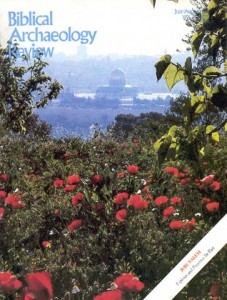Biblical Archaeology Review, July/August 1981
Special Section
Keeping Jerusalem’s Past Alive
Jerusalem is not only one of the oldest cities in the world, it is one of the few cities which has been continuously inhabited for more than 40 centuries. From before 1850 B.C., when the first wall surrounded and defended Jerusalem, people have been living there, building...Read more ›
Jerusalem’s Water Supply During Siege—The Rediscovery of Warren’s Shaft
The earliest city of Jerusalem was located on a small, 10 to 15 acre, spur south of the Temple Mount and the wall enclosing the Old City. This ancient area is known today as the City of David and, sometimes, as the hill of Ophel. The original...Read more ›
New York Times Misrepresents Major Jerusalem Discovery
Unique monumental structure inside Israelite Jerusalem defies explanation
There it was in the headline on page one of what is supposedly the most reliable and accurate newspaper in the country, the prestigious New York Times: “Palace of David or Solomon Believed Found.” The headline writer cannot be faulted, for he accurately reflected reporter Michael Widlanski’s...Read more ›
Features
Saving the Dead Sea Scrolls for the Next 2000 Years
Preservation in the Qumran caves was easier than in a museum atmosphere
The Dead Sea Scrolls were preserved in remarkable condition for 2000 years in the Qumran caves overlooking the Dead Sea. It seems almost a miracle that these caves in which the Essenes stored their scrolls were very nearly the perfect environment for the preservation of the documents...Read more ›
BAR Jr.: Young Archaeologist Strikes Pay Dirt
The first time I took my children on a dig, they were 13 and 11. Usually, you don’t find many children on a dig because there are no facilities for them and they might be out-of-place. Nevertheless, I thought they might be old enough to enjoy the...Read more ›
Earliest Aramaic Inscription Uncovered in Syria
Statue of newly discovered king bears 10th century B.C. bilingual inscription
An extremely important inscription recently surfaced in Syria and the few prominent scholars who know of it have been buzzing with excitement. It is an Aramaic inscription dating from the tenth century B.C., consisting of 23 complete and well-preserved lines. Aramaic was the everyday language in Palestine...Read more ›

